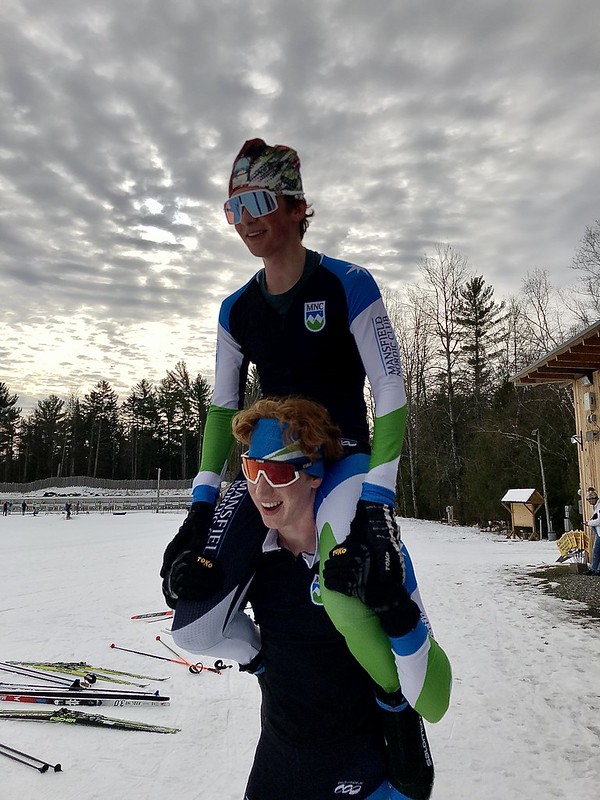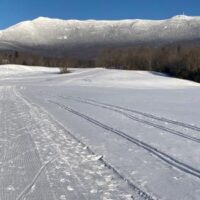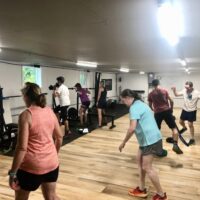 That was a great Thanksgiving Camp, and I’m reflecting back with a lot of positive takeaways. Thank you especially to Sara, Rick, and Erin who spent so much of their time and energy helping make this camp a success!
That was a great Thanksgiving Camp, and I’m reflecting back with a lot of positive takeaways. Thank you especially to Sara, Rick, and Erin who spent so much of their time and energy helping make this camp a success!There are some traits of this group that I’ve known for a while now, and others were brought to light given the circumstances of
our camp and the surroundings/opportunities we had. A few things that come to mind…
Classic skiing/kickwax
Lots of teams don’t bother classic skiing when conditions are tricky. They’ll use skis, switch to skate, or do a different workout. I refuse to do that even if it becomes hell for us coaches (sorry other coaches). Out west they’ve got hardwax every day, and in California it’s always yellow slush klister…
But for our first three times on classic skis this year (including that one before camp) we had:
- Start Oslo Purple klistermix with Start Wide klister dripped/ironed into the kick zone
- Start Oslo Blue with Start Wide klister and Rex Brown klister covering
- Rode Chola base klister followed by Start Purple and Swix Universal klister
For 19 skiers total, we had an amazing turnaround time thanks to the wax roller and this team’s ability to ski that stuff without a bunch of touchups or changes. They really know how to ski. And while striding work is always beneficial, some heard me reiterating the work on running technique…on the Devon Kershaw podcast this morning (recapping the World Cup races) it was brought up again how if you want to be a competitive classic skier in this generation, you can’t just stride everything smoothly.
Running and other power/speed techniques are a big part of the sport now, and we need to keep developing those skills that will allow us to maximize glide and speed without always having perfect kick.
Skate speed and terrain
In the timetrial yesterday, especially for later starters, there was a big difference in snow type and terrain over just a 1km loop. You had fast, hardpack icy snow on the flats where carrying speed was everything, and then you had slushy choppy hills where just building momentum at all was a challenge.
We rollerski a lot, and this team in particular really embraces rollerskiing more than I think some other teams do. This kind of race is where the benefits show, as you’re all comfortable pushing and adapting to the flats and hills without losing glide or speed. You can see the video from the race here.
I also put together a few clips of Jasmine Lyons, who won the women’s race by over 1 minute and who was the clear best technical skier of the entire field. It was chaotic watching on Dino Hill with so many people swarming by, but about halfway through the race I could tell Jasmine was who needed to be filmed as her skiing was just so obviously the biggest W out there. At first, in real-time, it looks almost slow and easy. But in slo-mo you can see why she crushes it: there’s an incredible weight shift and she rides a super flat ski on that climb, but she does it while always in motion from side-to-side. That soft, soupy snow doesn’t let you glide very long, so there’s no point in trying to force it. Instead she rides each push exactly as long as the momentum lasts, and then BOOM she’s accelerating onto the next ski.

The Professional Overtrainers
Ok this one doesn’t apply to everyone on the surface but as I reflected on it I realized it’s pretty important overall. We have gotten into some contentious moments this summer/fall regarding training hours, workout types, and sports science.
There has been tension between athlete-and-athlete, athlete-and-coach, and athlete-and-parents from what I can tell. It didn’t hit me until just recently how easily it would be for all of this to totally ruin a team climate, and maybe we did come close at times. But I think what is happening instead is a process where we’re all learning about ourselves (myself included) and becoming able to have a better awareness of:
- What we do and plan
- How we communicate those plans and execution
- What we say to each other regarding training
- The stigma we create (or don’t) around different training approaches or mentality
- Whether or not we all drive each other totally crazy in the midst of it
It’s pretty obvious that there’s different ways to approach this sport physically, mentally, and emotionally. My constant challenge is managing those areas, while also trying to put together the kind of training and environment that’s beneficial for different skiers on different paths and at different points in their ski lives. You all could make that REALLY difficult, and I think on many teams the athletes do make that really difficult for coaches and teammates.
It’s never going to be perfect, but I think we’ve learned a lot this past year and are at a point where we can coalesce into the healthiest it has been right in time for the racing part of the season!





Comments are closed.